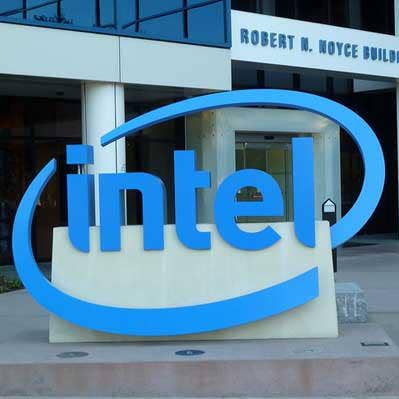Intel Data Platforms Group: New Executive Office Chases ‘Big Picture’
Intel has created a new executive office and new executive roles in the chipmaker’s Data Platforms Group, which was formed through a restructuring of Intel’s Data Center Group to make the company more ‘future focused,’ scalable and customer-centric.

Intel has formed an executive office to pursue a long-term strategy for data-centric products within the chipmaker’s newly formed Data Platforms Group.
The creation of a new executive office charged with thinking about the “big picture” of Intel’s data-centric product portfolio is a critical aspect of the recently formed Data Platforms Group, an Intel spokesperson told CRN. The executive office, which reports to Navin Shenoy, executive vice president and general manager of Intel’s Data Platforms Group, will consist of a CTO, a strategy officer and a business development leader. Intel plans to name the personnel filling the roles at a later date, the spokesperson said.
The Santa Clara, Calif.-based company reorganized the Data Center Group last November into what is now called the Data Platforms Group, a move that aimed to make the semiconductor giant more “future focused,” scalable and customer-centric in its pursuit of a $300 billion total addressable market that goes beyond CPUs and includes newer technologies like the Nervana neural network processors and Optane memory, the spokesperson said.
[Related: HPE Expects Intel Xeon Cascade Lake Shortage To Run Through 2020: Report]
The Data Platforms Group is led by Shenoy, who previously led the Data Center Group as executive vice president and general manager. His new role was initially revealed in December when the company announced its $2 billion acquisition of AI chip startup Habana Labs.
Shenoy’s new position gives him greater purview over Intel's data-centric products, which span from Xeon processors and Optane memory to new artificial intelligence accelerators like the Nervana chips and even network and storage products on the data center side.
"Shenoy is responsible for the group’s product lines and business strategies, focused on innovative solutions that are driving transformation across a range of use cases, including cloud computing, virtualization of network infrastructure and the adoption of AI," according to his bio on Intel's website.
In addition to disclosing the new executive office, Intel revealed the leaders of the market segment groups and product groups that report to Shenoy.
On the market segment side, there is the IoT Group, led Tom Lantzsch; the Network Platforms Group, led by Dan Rodriguez; and the Cloud and Enterprise Solutions Group, led by Jason Grebe. The latter group is a combination of Intel's Cloud Platforms and Technology Group, which Grebe previously led, and the Enterprise and Government Group, whose leader, Rajeeb Hazra, left in November.
On the product side, there is the AI Platforms Group, led by Naveen Rao; the Connectivity Group, led by Craig Barratt; the Programmable Solutions Group, led by Dave Moore; and the Xeon and Memory Group, led by Lisa Spelman. According to a press release in December, Habana Labs will operate as an independent business unit and report to the Data Platforms Group.
Spelman's new role as vice president and general manager of the Xeon and Memory Group is a step up from her previous responsibilities as vice president and general manager of Intel Xeon processors and data center marketing. In her new role, Spelman is focused on product management and marketing for Xeon processors as well as memory and storage products for the data center, like Optane DC persistent memory, that work in tandem with Xeon.
Dan McNamara, who was most recently senior vice president and general manager of Intel's Network and Custom Logic Group, left Intel in October for personal reasons — before he was hired by Intel rival AMD in January to lead the company's server business unit — according to the spokesperson. The move was not part of the restructuring, the spokesperson said, and McNamara’s position will not be refilled.
The disclosure of new details surrounding Intel’s new Data Platform Groups comes amidst multiple news reports that that layoffs are underway at the company. After reports last week said that some job cuts were expected in connection to the Data Center Group restructuring, The Oregonian Tuesday said additional layoffs, expected to number in the hundreds, are planned across multiple business units.
Intel declined to comment on the reports of layoffs.
California's Employment Development Division said on Wednesday it had received no WARN notices from Intel as part of the federal Worker Adjustment and Retraining Notification Act, which requires most employers to give advance notice of significant layoffs. A spokesperson for the state government of Oregon, another major employee base for Intel, did not respond to multiple requests for comment.
The restructuring of Intel’s Data Center Group comes as the semiconductor giant continues to move away from its traditional image as a supplier of PC processors. The chipmaker now positions itself as a data-centric company that provides a variety of solutions for everything from servers to edge devices and network infrastructure – which has been reflected in the company’s latest financial figures, with data-centric businesses like IoT and data center now accounting for nearly half of total revenue.
Dominic Daninger, vice president of engineering at Nor-Tech, a Burnsville, Minn.-based high-performance computing Intel partner, said the formation of the Data Platforms Group makes sense given that he has noticed an increasing diversity of Intel products entering the data center space.
“We're certainly seeing, more and more, where all these various products are moving into the HPC business,” he said, citing newer products in Intel’s Data Platforms Group portfolio like FPGAs. “It probably doesn’t make a whole lot of sense to have them compartmentalized.”